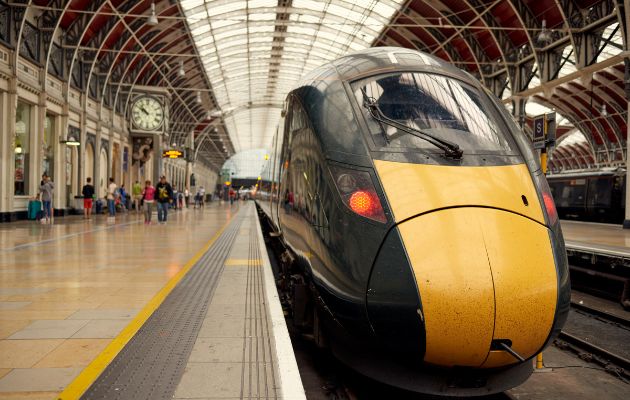
Policy decisions around public transport should be based on where we need to be, not to where we were pre covid-19.

Guilherme Rodrigues outlines how the government can take action to achieve ‘London-style’ urban public transport networks across the UK.
The cost of living crisis is likely to be the new government’s main priority but the levelling up agenda should not be forgotten. The Levelling Up White Paper, published earlier this year, rightly highlighted the need of building ‘London-style’ public transport networks across other parts of the country.
Here are the three things the Transport Secretary needs to know to achieve that goal:
The public transport debate over the last two years has frequently focused on achieving pre-pandemic levels of ridership. This is understandable in an environment where usage is still substantially below these levels. However, for places outside London, the ambition to return to pre-pandemic levels is not bold enough.
In the decades before Covid-19, bus ridership in British major metro areas was already in decline and public transport take-up was relatively low when compared to London and several Western European cities. Therefore, aiming for pre-pandemic levels of ridership merely returns to an undesirable equilibrium that was already identified as an area of improvement before the pandemic. Instead the Transport Secretary needs to work with local leaders to set more ambitious targets – such as doubling bus ridership in major cities over the next decade.
To increase public transport ridership, reforms to deliver bus franchising and integrate different modes of transport are necessary. Moreover, revenue support in the short to medium term for initiatives like the £2 bus fare cap would simultaneously boost ridership and help households through the cost of living crisis.
Finally, the City Region Sustainable Transport Settlement fund is a step in the right direction and the Transport Secretary should recognise the need for further capital investment in the largest cities in the UK.
Large cities in the UK underperform their Western European peers in terms of public transport accessibility. In some cases, like Leeds, this is partly explained by the lack of public transport infrastructure, but this is only part of the problem. All large cities have low population densities in areas with good public transport links. Therefore, making public transport connectivity better will require more residents to live closer to both existing and new public transport stops.
To increase public transport accessibility and ridership, the Transport Secretary could make public transport infrastructure in big cities conditional on increased use of local development orders (LDOs) by local authorities. LDOs are a much more rules-based form of planning consent, where local authorities can set conditions like height limits, density, and developer contributions. Moreover, even without having the powers, the Transport Secretary should champion planning reform that prioritises initiatives to increase density around well-connected areas. This would help make public transport investment more viable and increase ridership. Planning reform is politically difficult, so it is important to have as many vocal supporters as possible.
The cost of living crisis has highlighted the fragilities of a public transport funding system that is over-dependent on the farebox, the user, and the general taxpayer. This situation has been evident within the emergency funding packages for TfL, but it also exists elsewhere.
While the government gives revenue support to local transport, the Department for Transport should also work with city leaders to explore new funding structures for local networks over the long term. An alternative model should reflect the wider benefits of public transport networks (such as improved air quality and less congestion) that all residents benefit from even if they do not frequently use public transport. A new funding model could involve car-restricting policies such as congestion charging or a Workplace Parking Levy; or give further fiscal powers to cross-subsidised public transport at the local level.
In the coming months, the Centre for Cities will expand its research on how TfL could finance itself in the future to avoid potential rounds of emergency funding and negotiations with DfT. This research can help provide solutions to similar issues in other cities.

Policy decisions around public transport should be based on where we need to be, not to where we were pre covid-19.

Buses are critical urban infrastructure. But the number of journeys made on them has declined in almost all cities apart from London for the past few decades. This report cites deregulation...

This report examines whether intra-urban public transport plays a role in the underperformance of big British cities and sets out the implications that transport has for the levelling up agenda.

Ten case studies comparing the public transport networks and urban form of UK and Western European cities
Leave a comment
LBTC
Nice knowledge-gaining article. This post is the best on this valuable topic. I like your explanation of the topic and your ability to do work. I found your post very interesting.